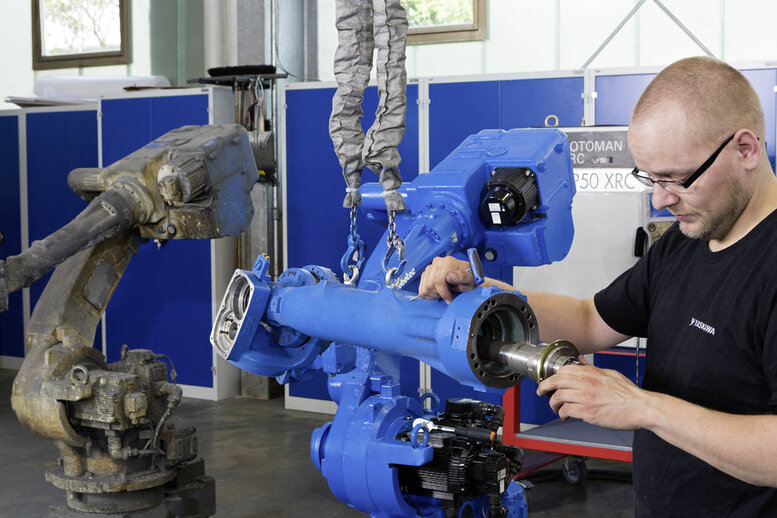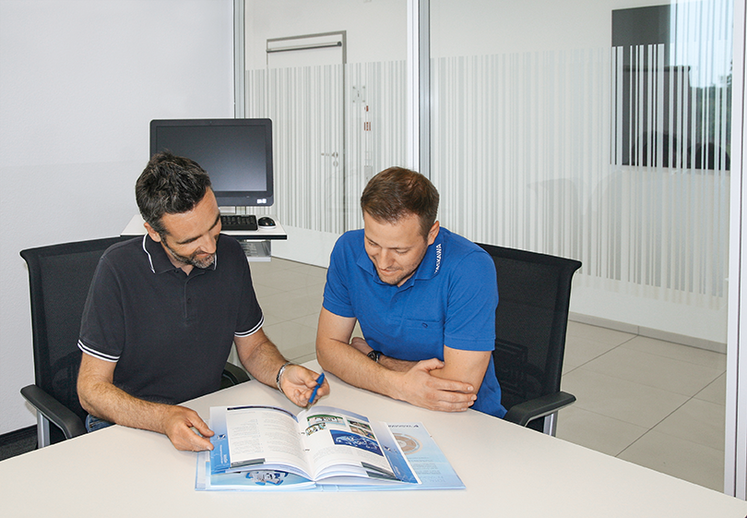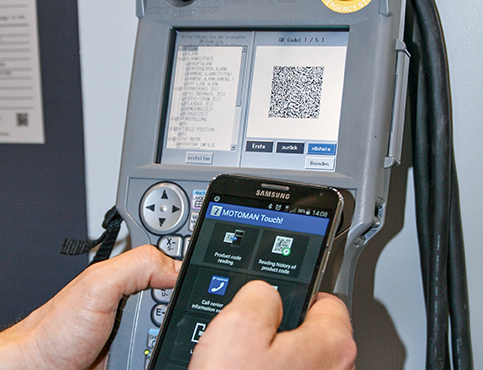Our industry-leading, high-speed industrial robots include high-payload, extended-reach, ultra-maneuverable seven-axis and unique 15-axis dual-arm robots.
Production start-up after the summer break: knowing - and avoiding - possible problems with industrial robots
Industrial robots need neither sleep nor rest. That’s why they have become irreplaceable in modern production plants. Nevertheless, sometimes a planned production interruption is unavoidable - for example, when the employees are on summer vacation. This makes it all the more important that the production startup after such a pause proceeds smoothly.
Planned breaks can be found in all production calendars. They may last a few days or even several weeks - but in any case, things should continue smoothly. After all, industrial robots perform central tasks at various points in automated production.
However, reality often looks quite different: You want to restart the system, but the robot does not move or an error message lights up. Typical problems in these cases are loss of alignment, not recognizing a standard program or an empty memory. The cause is usually easy to find and could have been avoided with little cost and time. These unpleasant - and extremely costly - surprises are experienced above all by companies that lack appropriately trained personnel.
Corrective maintenance pays off
Most robot control units have one or more batteries. When the control unit is switched off, whether intentionally or unintentionally, this ensures that the robot is shut down cleanly and all important data are stored - such as position, program or user data. Maintenance manuals advise you to replace the batteries of the control unit preventively after a certain number of operating hours or years in order to ensure its smooth operation. Many control units also have a control function that recommends replacement with the message "Low battery voltage".
Tailor-made maintenance strategies allow modern industrial robots to run for a long time. Various types of maintenance are described in DIN 31051, which also applies to robots. Corrective maintenance replaces worn parts and repairs defective system components in case of failure. In addition, experience shows that selective maintenance results in faster machine wear.
According to the definition of DIN EN 13306, the aim of maintenance management is to reduce the probability of a failure or limited operational capability. In systems using industrial robots, the probability of a failure is directly related to the life cycle of the robot. This can be fundamentally improved by preventive maintenance management. In the long term, this ensures that the value of production goods is maintained.
But there are also other economic advantages that speak for preventive maintenance management: For example, based on an increase in efficiency of 0.25% per year, a better maintained machine will stand still 10 hours less at 4,000 operating hours per year. If one assumes a machine hourly rate of 2,500 euros, this corresponds to a saving of 25,000 euros per year.
Software support
Plant-specific maintenance management can be planned and set up from the time of purchase using predictive maintenance. Retrievable data can reflect the status of the robot and the system. Irregularities regarding wear can be detected at an early stage by means of continuous condition monitoring. Suitable countermeasures can be taken or preventive maintenance can be scheduled precisely on the basis of this data.
Robot manufacturers usually offer software options for continuously monitoring the robot’s condition. This software can be used to visualize the condition of individual robot components.
Total customer support
But there are limits. These are often reached, for example, when the robot system is to be used for other purposes or when the system is converted to a new product. Then it is desirable to continue using as many plant components as possible. However, completely modernising the plant usually means a "substantial modification of machines" in the sense of the EC Machinery Directive (Machinery Directive/2006/42/EC). In this case the safety technology must also be upgraded accordingly, which also requires a renewed CE certification. Yaskawa covers these needs with its engineering as well as CE and safety consulting services.
Safety consulting is one of the components of a broad service portfolio that Yaskawa has grouped together under the heading "Total Customer Support (TCS)". One focus is on preventive maintenance, service and spare parts support as well as optimization and modernization throughout the entire product life cycle. Telephone hotlines serve as a central contact point for technical problems and questions for all Yaskawa equipment generations. The training courses provided by the Yaskawa Academy round off the TCS offer.
Author:
Siegfried Schauer, Supply Chain Management TCS Yaskawa Europe GmbH - Robotics Division
Contact for reader enquiries:
Tel. +49-8166-90-0
Fax +49-8166-90-103






















